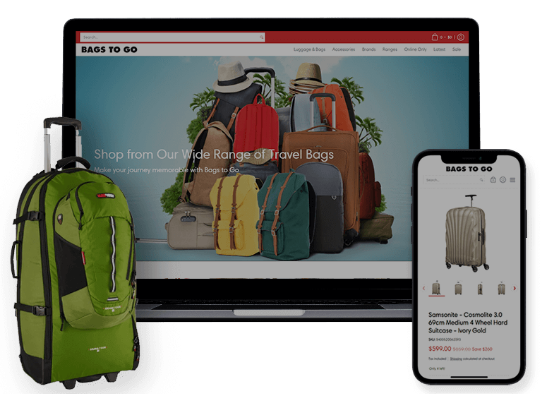The faster new employees feel valued and confident in their ability to do their jobs, the quicker they’ll be able to successfully contribute to your company’s vision and mission.
This is where a structured, strategic onboarding process comes in. It ensures that employees feel welcome, understand expectations and have the support they need to grow through mentorship, coaching and feedback.
In turn, this increases employee confidence, satisfaction levels and reduces unwanted (and costly) turnover.
If you’re looking to reap all the benefits of effective onboarding, we’ve compiled 5 essential steps to help you streamline your employee onboarding process.
Ready to elevate your efforts?
Let’s get started.
5 Steps to Streamline the Employee Onboarding Process
Step 1: Preboarding
The first step to making a good impression on new employees is through pre-boarding. This involves setting the groundwork before a new employee's first day so they feel welcome even before they start. An effective pre-boarding experience ensures a smooth, memorable process from the start. New hires are more likely to be productive and engaged, resulting in lower turnover.
Here’s what you can do to ensure an efficient pre-boarding process:
- Send an introductory email: This announces the new hire's arrival, makes a new hire feel valued and gets both the hire and the team excited for the new transition.
- Get essential paperwork out of the way: Besides ensuring that a new hire has understood and signed their work contract, get a new hire to fill out tax, benefit and other essential forms early to avoid administrative issues and frustrating delays.
- Provide access early: For a confident start, ensure new hires have early access to any systems or internal knowledge bases on their first day.
- Provide onboarding documents: Resources such as employee handbooks, guides and manuals provide new hires much-needed guidance and clarity.
- Start mentorship or a buddy program: Having a colleague to ask questions and turn to for support eases employee anxiety and streamlines integration into the company.
- Provide an onboarding plan: A roadmap, document or checklist that outlines the onboarding timeline, goals, responsibilities and support available ensures a streamlined and trackable experience.
Step 2: Leverage the Right Technology
Below, we discuss three types of tools you should be leveraging to streamline your onboarding efforts.
Onboarding Portals
Onboarding portals are one-stop websites that new hires can access when they first join a company. In addition to providing new hires with essential company knowledge, these platforms serve as a more dynamic and engaging way of collecting, storing and organizing new employee information.
Onboarding portals also help track onboarding progress, giving HR a clear understanding of which processes are complete and where new hires require additional support. With a cohesive, online system for guiding new hires through onboarding, you're likely to see higher levels of employee satisfaction, retention and time-to-productivity.
Must-have resources for an onboarding portal include:
- Onboarding checklists
- Progress trackers
- Training materials
- Company culture resources
Internal Knowledge Bases
Imagine having all of your valuable company information and knowledge available to employees in one convenient location. This would empower new hires with the resources to excel, resulting in faster learning and onboarding. In turn, your company would experience notable benefits such as greater employee satisfaction and higher productivity levels.
That's the power of an internal knowledge base.
Internal knowledge bases typically include:
- Company information, protocols and policies
- Standard Operating Procedures
- Employee handbooks and guides
- Training manuals and tutorials
- Personnel details
- Calendars and events
- Frequently asked questions
This list isn't exhaustive — it ultimately comes down to your unique needs and the key resources you feel would adequately prepare hires to perform at their best. As for actually creating your knowledge base, keep the following in mind:
- Start with a clear strategy
- Select the right internal knowledge base tool
- Assign a dedicated knowledge base team
- Evaluate and continuously improve your knowledge base
With their easy-to-navigate user interfaces, powerful search capabilities and robust collaboration features, internal knowledge base tools like Helpjuice are what you need to centralize knowledge, boost efficiency, and safeguard against costly misinformation.
Process Documentation Tools
Process documentation refers to capturing or documenting all the steps associated with particular workflows. Key examples of process documentation include step-by-step guides, tutorials, SOPs and process maps. The right process documentation tools streamline this process, allowing you to painlessly create resources to get new employees up and running faster.
With a tool like Wizardshot, you can finally say goodbye to clunky, time-consuming process documentation methods. It's as easy as installing our free browser extension, capturing your workflows and letting our AI-powered software take care of the rest.
In just minutes, you (and new hires) can have access to engaging, easily shareable guides to boost productivity and knowledge sharing.
Step 3: Standardize your process
Best-in-class organizations don’t leave their onboarding up to chance; they have a formal process and coordinated policies and processes to help new hires adopt the company culture and adjust to their new position. As a result, these organizations experience tangible benefits such as:
- Higher employee job satisfaction
- Lower employee stress levels
- Stronger organizational commitment
- Lower turnover levels
- Higher performance levels
- Overall career effectiveness
Therefore, to streamline your own onboarding process, first craft a step-by-step process that aligns with your company values and goals. Then, standardize it to ensure effectiveness and consistency. While each onboarding process will differ from company to company, as a general guideline, ensure that your own walks employees through four distinct elements namely: connection, culture, clarification and compliance.
- Connection: Involves guiding new employees through establishing interpersonal relationships and information networks.
- Culture: Refers to familiarizing employees with your company culture and organizational norms, both formal and informal.
- Clarification: Includes ensuring that new employees understand their roles and everything that is expected of them.
- Compliance: Involves guiding employees through any company policies, rules, regulations or ethical standards.
Step 4: Training and Development
Part of providing a structured onboarding process is ensuring that new hires have access to the training they need to build their proficiency and boost productivity. This involves making essential learning resources and guidance easily accessible from the outset.
Formal orientation programs
As the orientation process tends to color a new hire's perception of the company, it is imperative that it is carefully planned out. Instead of simply going with the flow, a formal orientation program ensures that all new employees go through a structured introduction of company values, policies and key processes. Done right, new employees will not only feel welcome, but also engaged and adequately prepared for their roles.
Training Guides and Manuals
Training guides and manuals impart crucial knowledge and skills to new employees. These handy resources are the difference between confident, productive new employees and new employees who are frustrated and unable to carry out their duties effectively. Whether you deliver vital learning content via articles, tutorials, webinars or workshops, ensure that your content is well-organized and engaging to enhance learning.
Job Shadowing
Nothing prepares a new employee for the realities of their new work environment quite like observing a successful colleague at work. Job shadowing allows new employees to gain a thorough understanding of their role, build important connections and significantly reduce their ramp time. While modeling effective behavior, new employees develop crucial self-efficacy. In turn, this increases their job satisfaction levels - a key factor in reducing turnover rates.
Stakeholder Meetings
Whether formal or informal, meetings that allow new employees to interact with various stakeholders such as senior executives, managers, team members or cross-departmental colleagues are an effective way to boost motivation and engagement. During these crucial interactions, new employees gain insights into the company's values and strategic goals, allowing them to align their own efforts accordingly.
Step 5: Feedback and Continuous Improvement
During the onboarding process, new hires will inevitably make missteps, and will need feedback to adjust and thrive. Similarly, your hiring team or company has the opportunity to gather valuable feedback from new hires. This proactive approach to giving and receiving feedback not only gives new hires much-needed direction, it also ensures that your onboarding process gets better over time.
Develop Efficient Feedback Systems
One of the best ways to ensure relevant, useful feedback is to develop systems that streamline data collection and analysis. Haphazard approaches will do little to track a new employee's progress or expose inefficiencies in your onboarding process. While the right approach will vary from company to company, it is essential that the methods you apply are consistent and well-understood by everyone involved.
Encourage a Growth Mindset
Employees shouldn't dread feedback, they should welcome it as part of their growth and development. As such, it is imperative that they understand the objectives of any feedback and review processes. Feedback should also be specific, constructive and actionable to improve performance while keeping morale high. When new employees work hard to act on feedback, acknowledge it; this fosters a culture of learning and continuous improvement.
Implement Feedback
It isn't enough to simply gather feedback. The magic happens when you choose to listen and diligently implement suggested improvements to your onboarding process. This iterative approach ensures that new employees get the best start, boosting their confidence and proficiency in record time.
Wrapping Up
Don’t let an ineffective onboarding process cost you talent and key resources such as time or money. Instead, take ownership of your onboarding with a structured process, comprehensive resources and the right tools.
Speaking of the right tools…
Wizardshot takes the fuss out of creating crucial employee training and onboarding resources.
The best part? It’s simple to use and 100% free.
Install Wizardshot today.


.jpg)